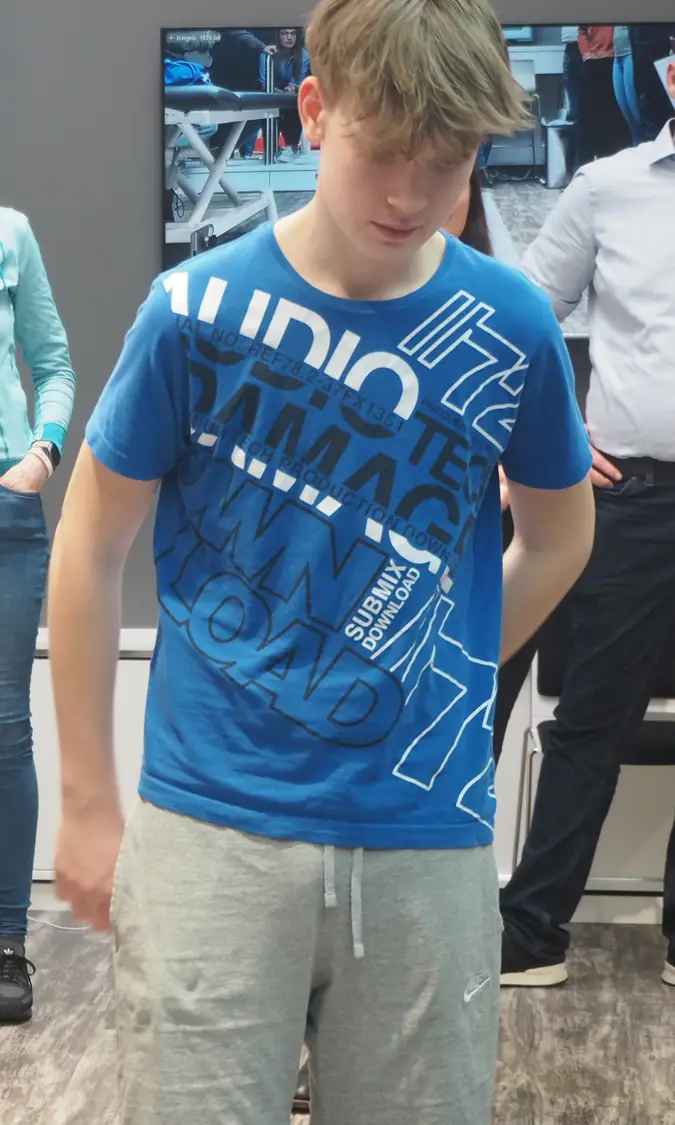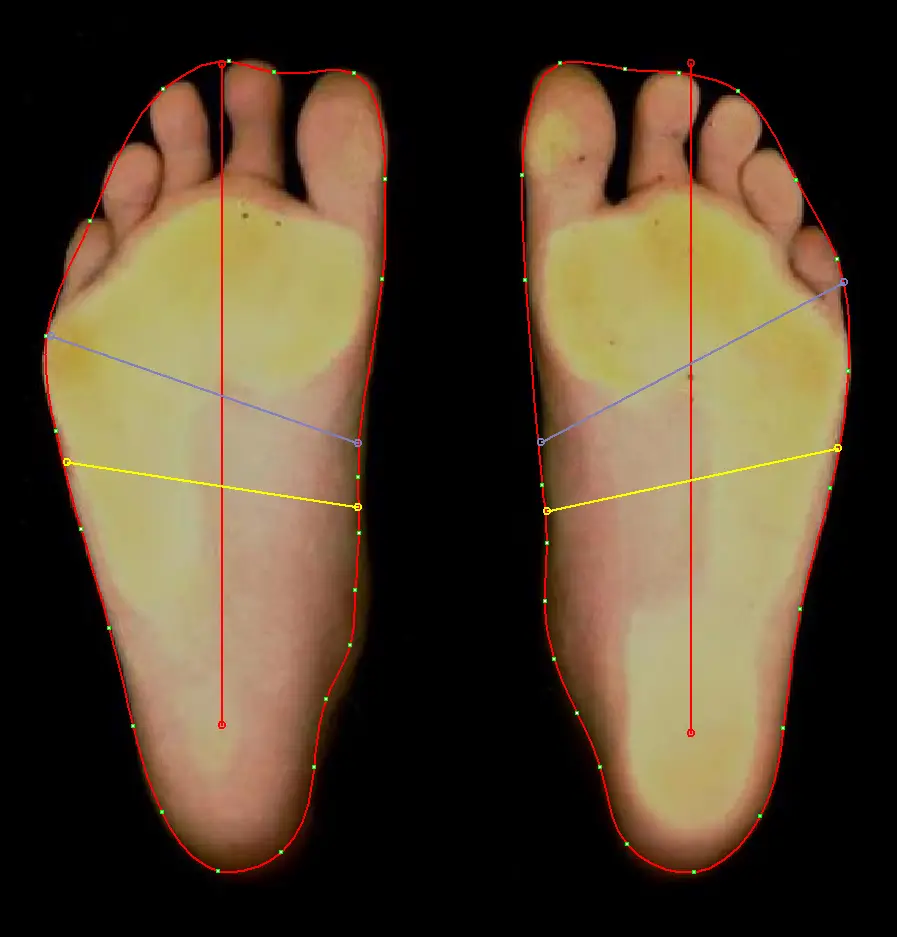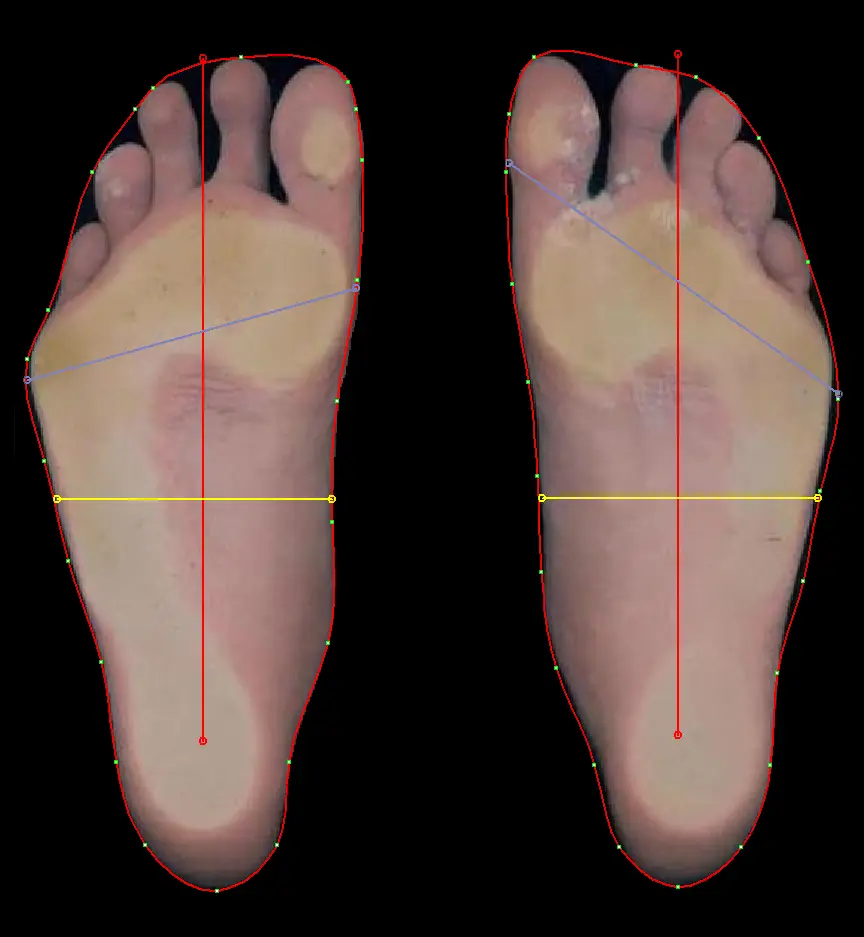
In 2021, Johannes, who was 14 at the time, came to us for the first time. His habitual tiptoeing was immediately noticeable, which over the years had caused posture problems and painful foot complaints.
The motion analysis also showed that the buckling of the hindfoot contributed to a valgus knee axis, which is not sufficiently stabilized by the muscles and biomechanically causes an additional strain on the knee joints. Last but not least, insufficiently stable footwear was identified.
As a result, individual proprio foot orthoses were made. After two years and two growth-related new foot orthoses, impressive improvements have already been achieved.
Another fine adjustment and new sensorimotor foot orthoses during a follow-up examination showed immediate success. The stirrup muscles were particularly stimulated medially to counteract buckling of the heel bone by activating the tibialis posterior muscle (as a supinator of the ankle) and to come closer to a neutral position of the hindfoot in the gait cycle.
Emphasis was placed on the detonation of the ankle's plantar flexors, in which the retrocapital and toe bridge were particularly strengthened by OST master Stefan Woltring. A pre-tensioning effect, caused by the retrocapital and the toe bridge, leads to a neuromuscular coupling effect, which in turn causes a detonation of the calf musculature. As a result, an improved foot roll movement can be achieved through a multitude of repetitions (in the sense of daily wearing of the foot orthoses). By reducing the tension in the calf muscles, the heel bone can maintain a longer heel strike in the gait pattern and, in Johannes' case, prevents overloading of the ball of the foot. In this case study, this has led to a complete reduction of plantar foot pain.


In 2021, the static foot scan still showed that there was insufficient heel loading on the left side and that there was overloading of the metatarsals on both feet. In 2023, and after intensive wear of the sensorimotor foot orthoses, the foot appearance has improved noticeably.